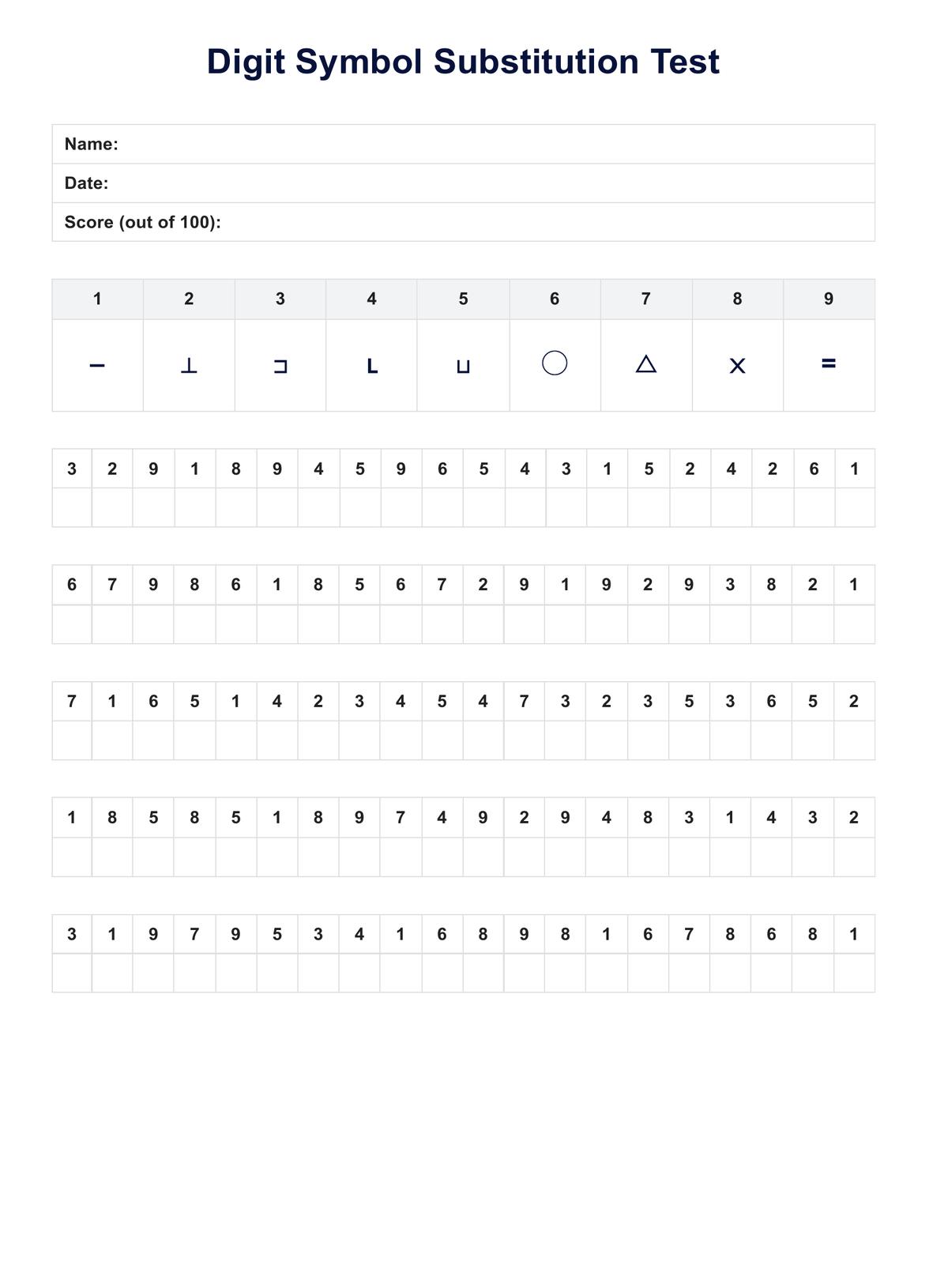There are quite a few differences between a Digit Span Test and the DSST. The Digit Span Test measures short-term auditory memory, whereas the DSST measures processing speed, executive function, and several other cognitive performance measures. In the DSST participants match symbols to the correct digit by hand, or alternatively, verbally, whereas in the Digit Span Test, patients repeat a series of digits read out to them in the same order they were read- or for the backward version, repeat the digits in reverse order.

Digit Symbol Substitution Test
Unlock the potential of the Digit Symbol Substitution Test with our comprehensive guide and example. Enhance your cognitive skills with a free PDF download.
Digit Symbol Substitution Test Template
Commonly asked questions
Due to the wide range of performance measures that the DSST is sensitive to, it can be used in a range of situations from clinical neuropsychology to a psychiatric clinical evaluation. As well as its clinical applications, the DSST is a useful measure for researchers as a standardized measure of many different cognitive operations, as well as high test-retest reliability (Rosano et al., 2016).
Test-retest reliability refers to the stability of the result of a psychological assessment over time. This is an important measure as high test-retest reliability reduces the probability that different results obtained from the same individual over time are due to variations in the test itself. The test-retest reliability of the DSST makes it a great candidate for use in psychological investigation or research.
EHR and practice management software
Get started for free
*No credit card required
Free
$0/usd
Unlimited clients
Telehealth
1GB of storage
Client portal text
Automated billing and online payments











